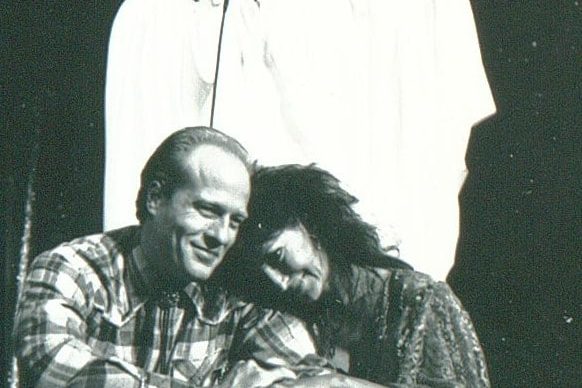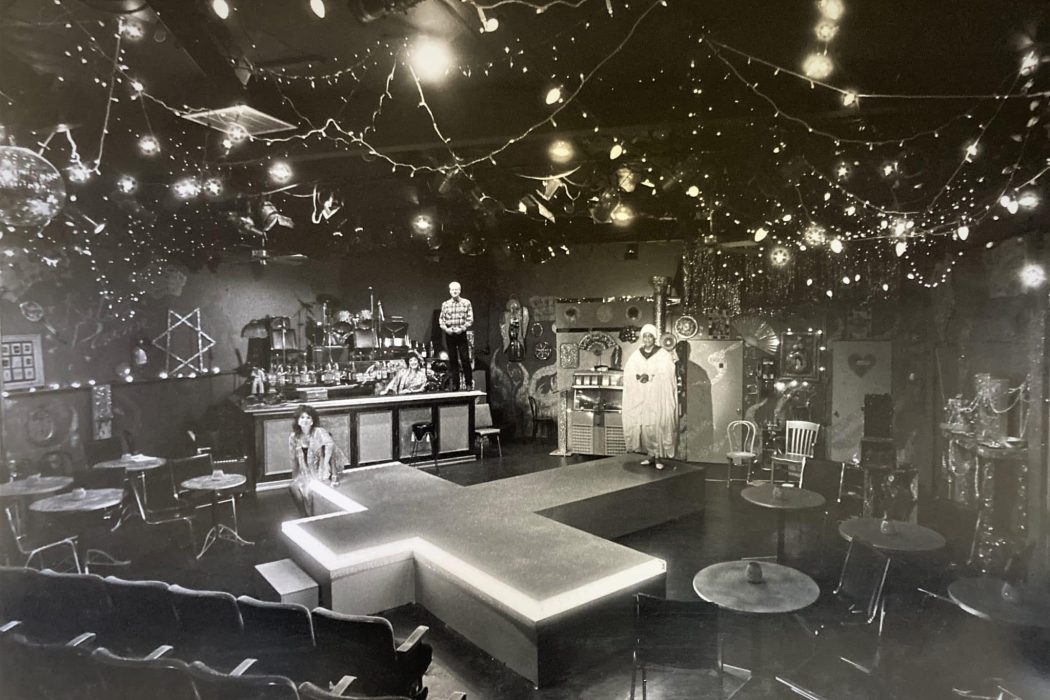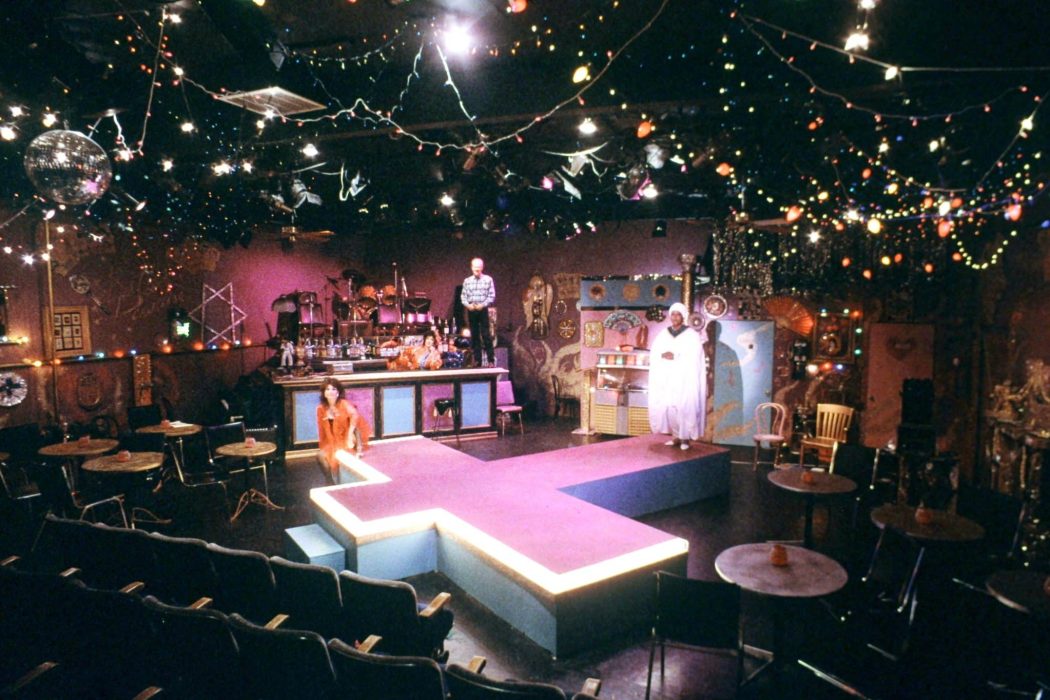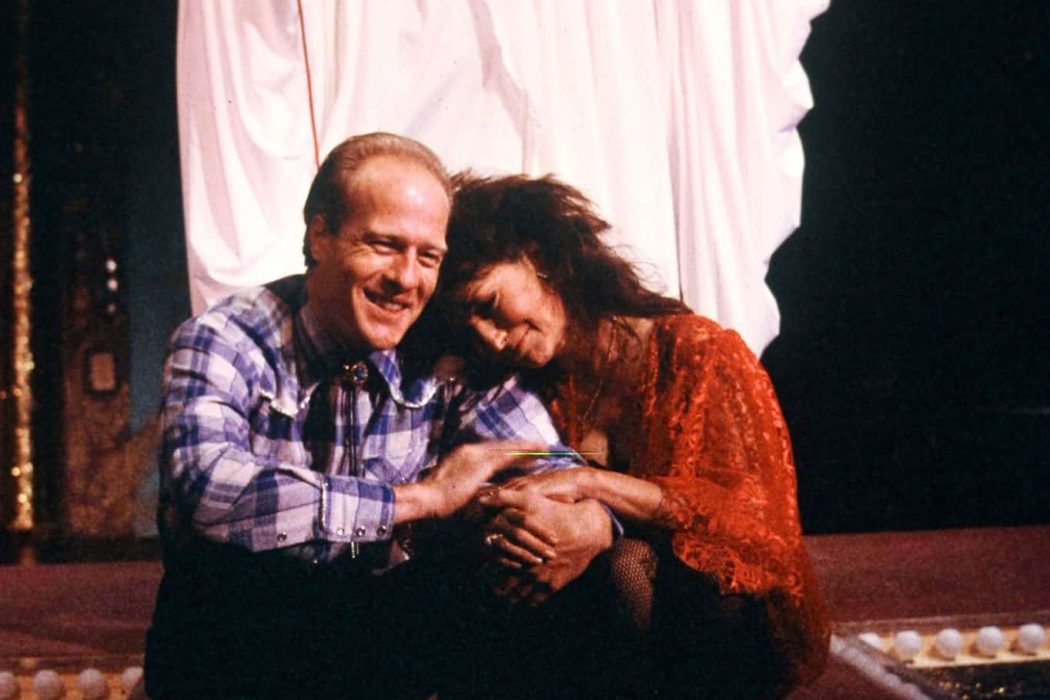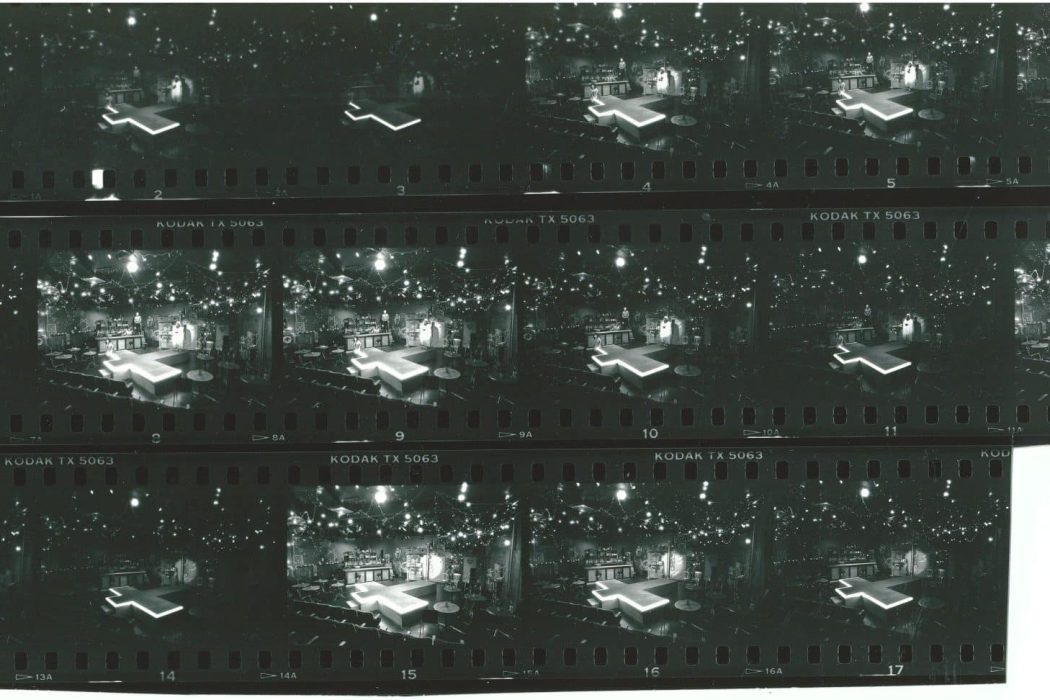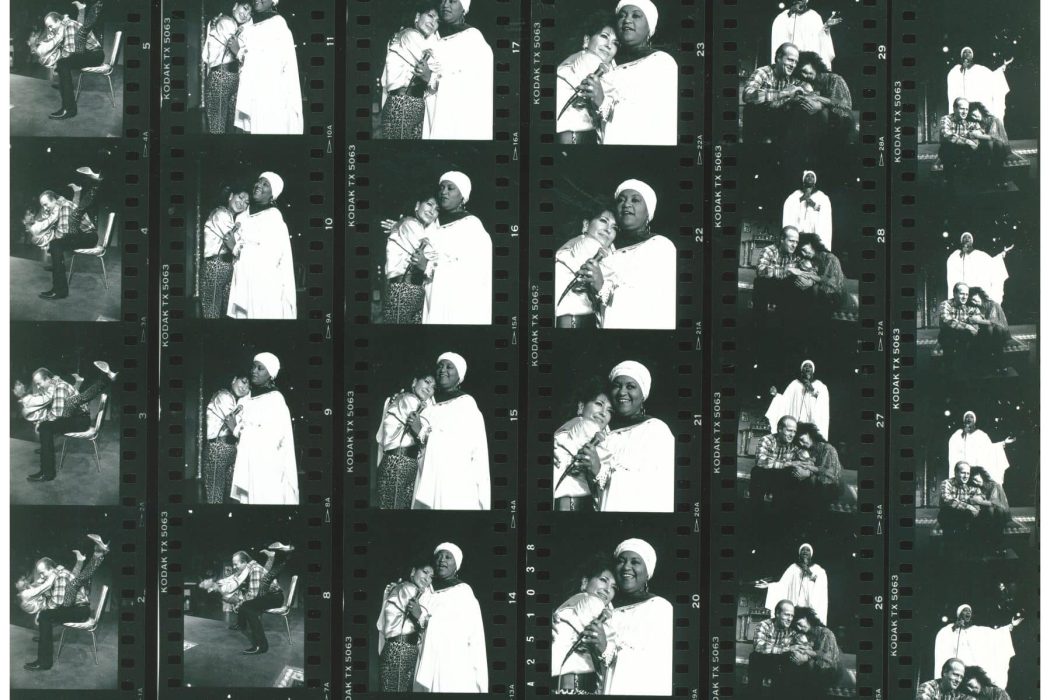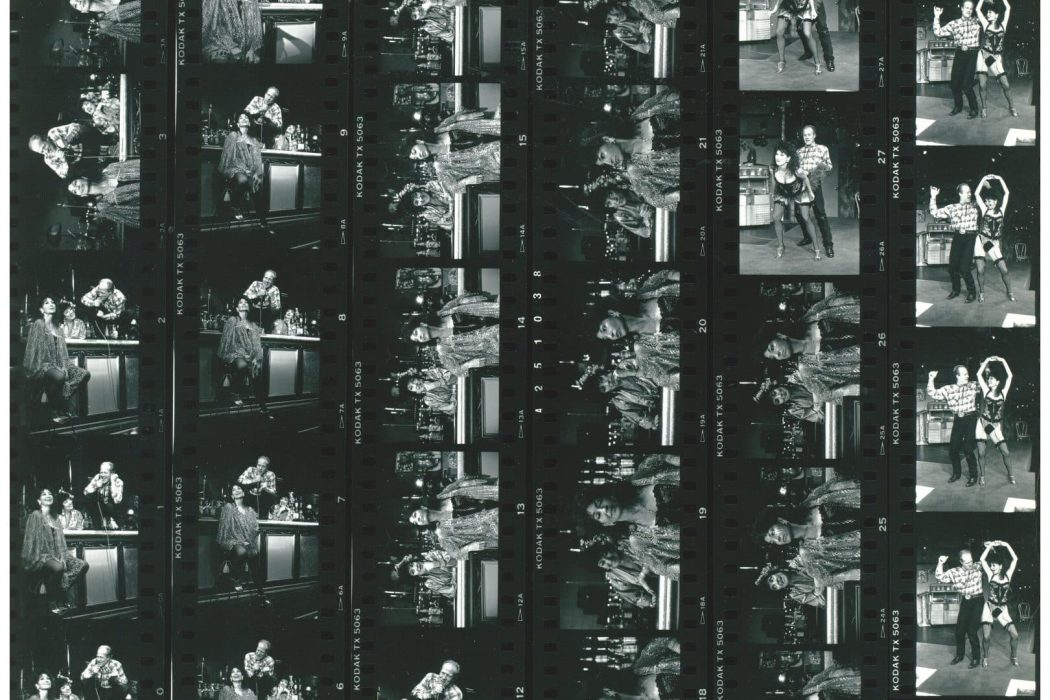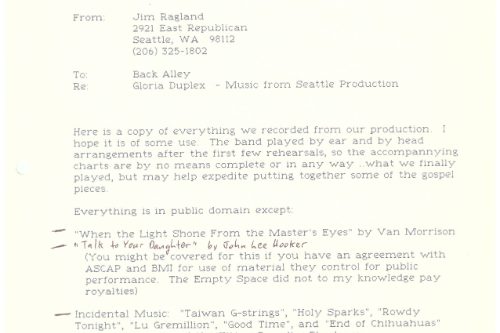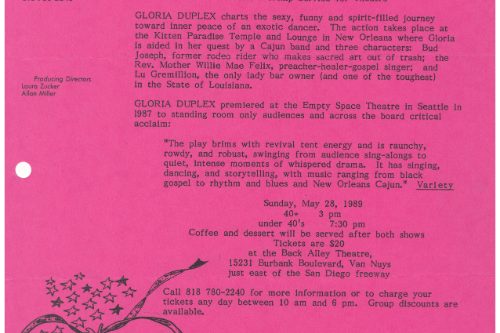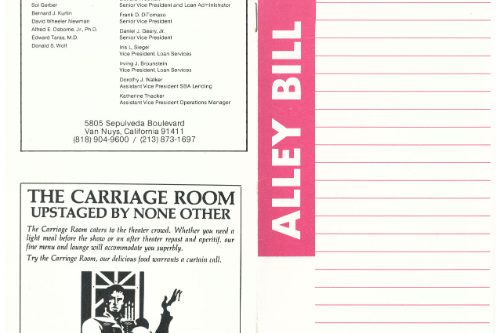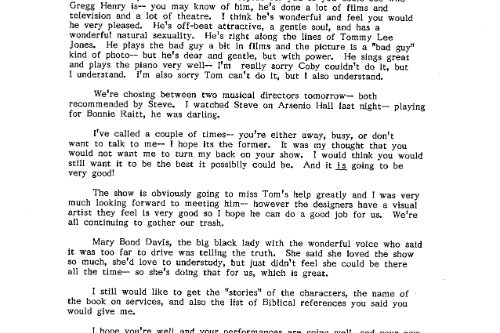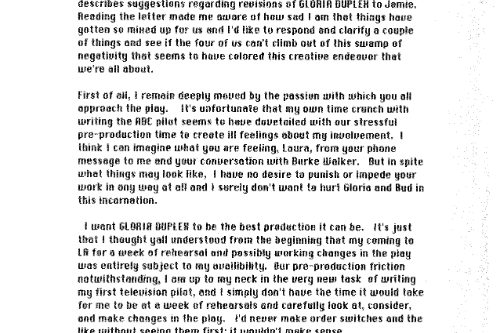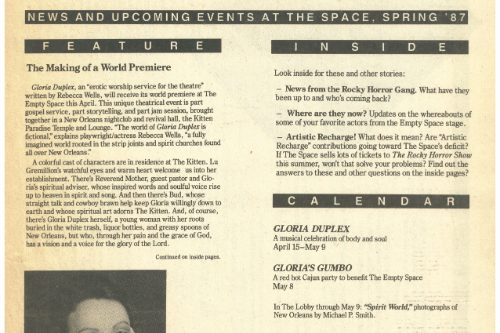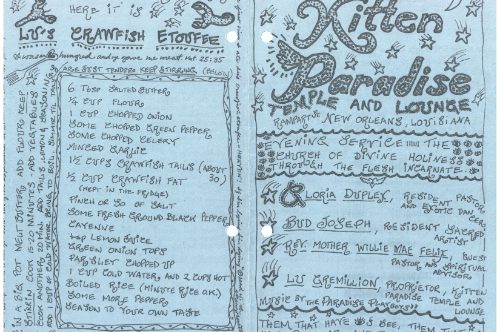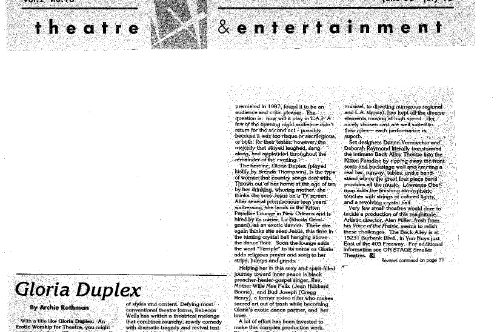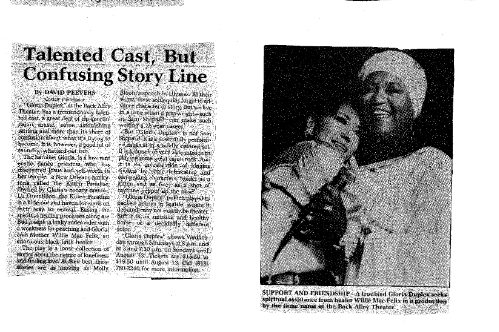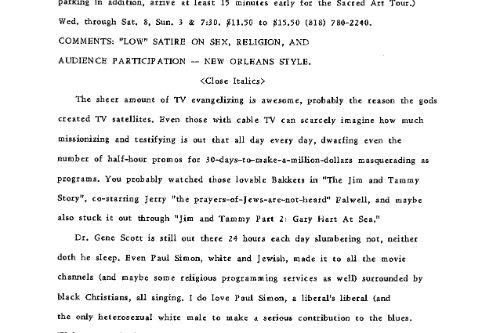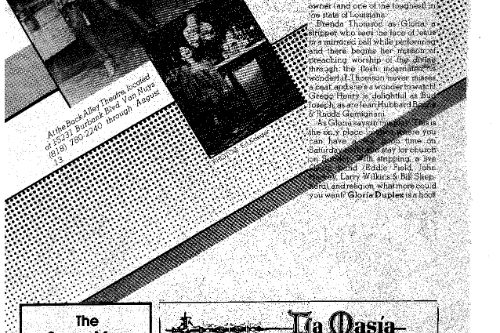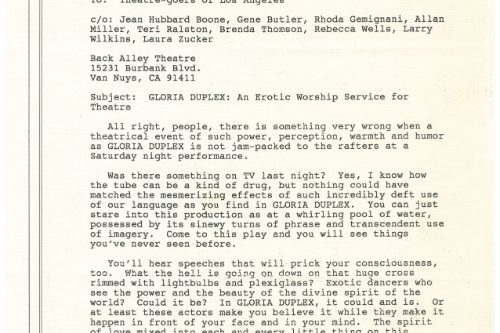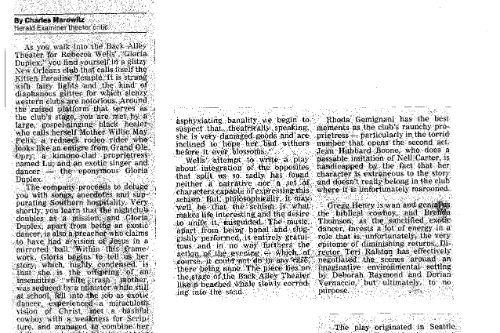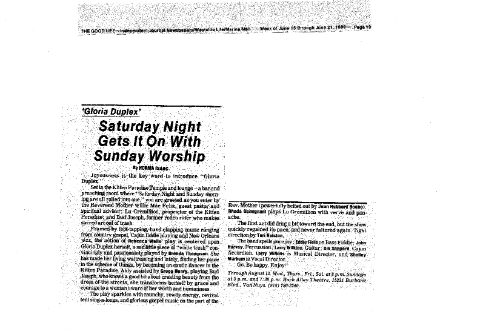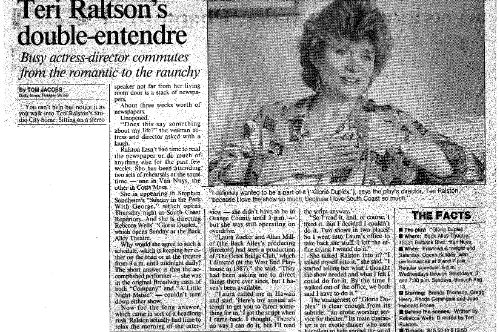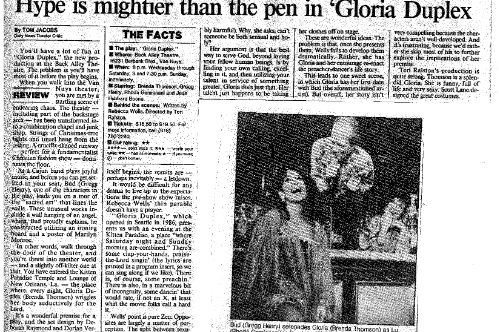Introduction
For GLORIA DUPLEX: AN EROTIC WORSHIP SERVICE FOR THEATRE in 1989, the Back Alley was transformed into the Kitten Paradise Temple and Lounge in New Orleans, “a place where Saturday night and Sunday morning are all rolled into one,” by husband and wife set design team Deborah Raymond and Dorian Vernacchio. And despite a live Cajun band, great direction by Teri Ralston, and brilliant performances by Brenda Thomson as the stripper who’s found God, Gregg Henry (and then Gene Butler) as a former rodeo rider who makes scared art out of trash, Jean Hubbard Boone as a preacher-healer-gospel singer, and Rhoda Gemignani as the only lady bar owner in Louisiana, the set really was the star.
As the Daily News said, “You’ll have a lot of fun at GLORIA DUPLEX…the problem is you’ll have most of it before the play begins. When you walk into the Van Nuys theater, you are met by a scene of endearing chaos. The theater—including part of the backstage—has been transformed into a combination chapel and junk shop. Strings of Christmas lights and tinsel hang from the ceiling. A crucifix-shaped runway—perfect for a fundamentalist Christian fashion show— dominates the floor.”
Some were enthralled, but most thought playwright Rebecca Wells’ key point was lost in the mix. As summarized in the Daily News review it was this: “Opposites are largely a matter of perception. The split between sexuality and spirituality that is so ingrained in Western theology is artificial (and probably harmful). Why, she asks, can’t someone be both sensual and holy?” Or as Rebecca put it, she was interested in “the action of grace in territory held mostly by the devil.”
Written by Rebecca as a vehicle for herself, GLORIA DUPLEX was workshopped and premiered at the Empty Space in Seattle in 1987 in a production I flew up to see. Rebecca, a master of self-promotion (and I mean this in a good way because that’s what artists have to do) must have urged me to come.
When Rebecca later broke her foot and was sidelined from performing, she started writing a novel. I seem to remember that Rebecca’s savvy about getting her self-published first novel, “Little Alters Everywhere,” out to independent book stores and clubs, made it take off. It was picked up by HarperCollins and clawed its way onto the NY Times bestseller list in 1992. The “Divine Secrets of the Ya-Ya Sisterhood” followed in 1996, with the movie version and several more novels to follow. I say “seem to remember,” because although it’s stuck in my mind as the first example of grass-roots persistent marketing making an artwork go viral, which is pretty awesome, this version has been erased from all the official accounts. As is GLORIA DUPLEX from Rebecca’s website. I guess we all want people to think that we—and our work—like Athena, the goddess of wisdom, sprang fully grown from the head of Zeus. But that’s never true, is it?
–Laura Zucker




